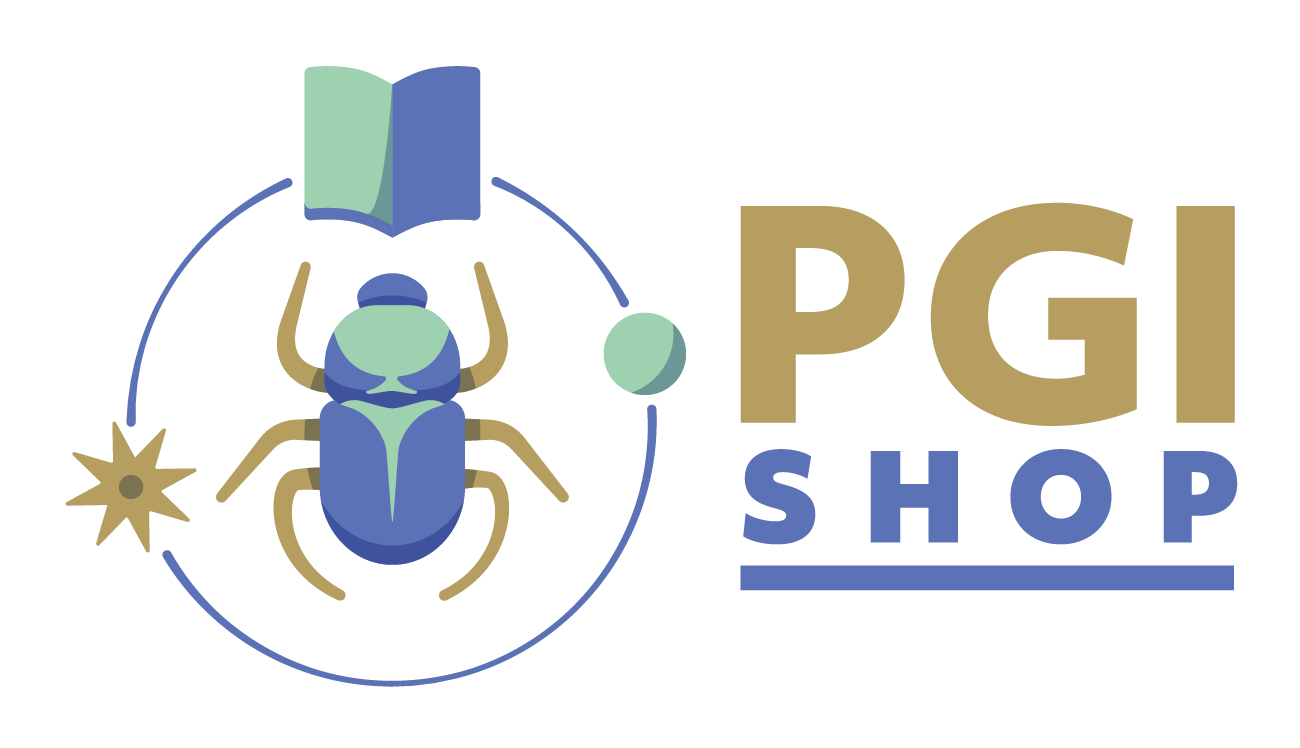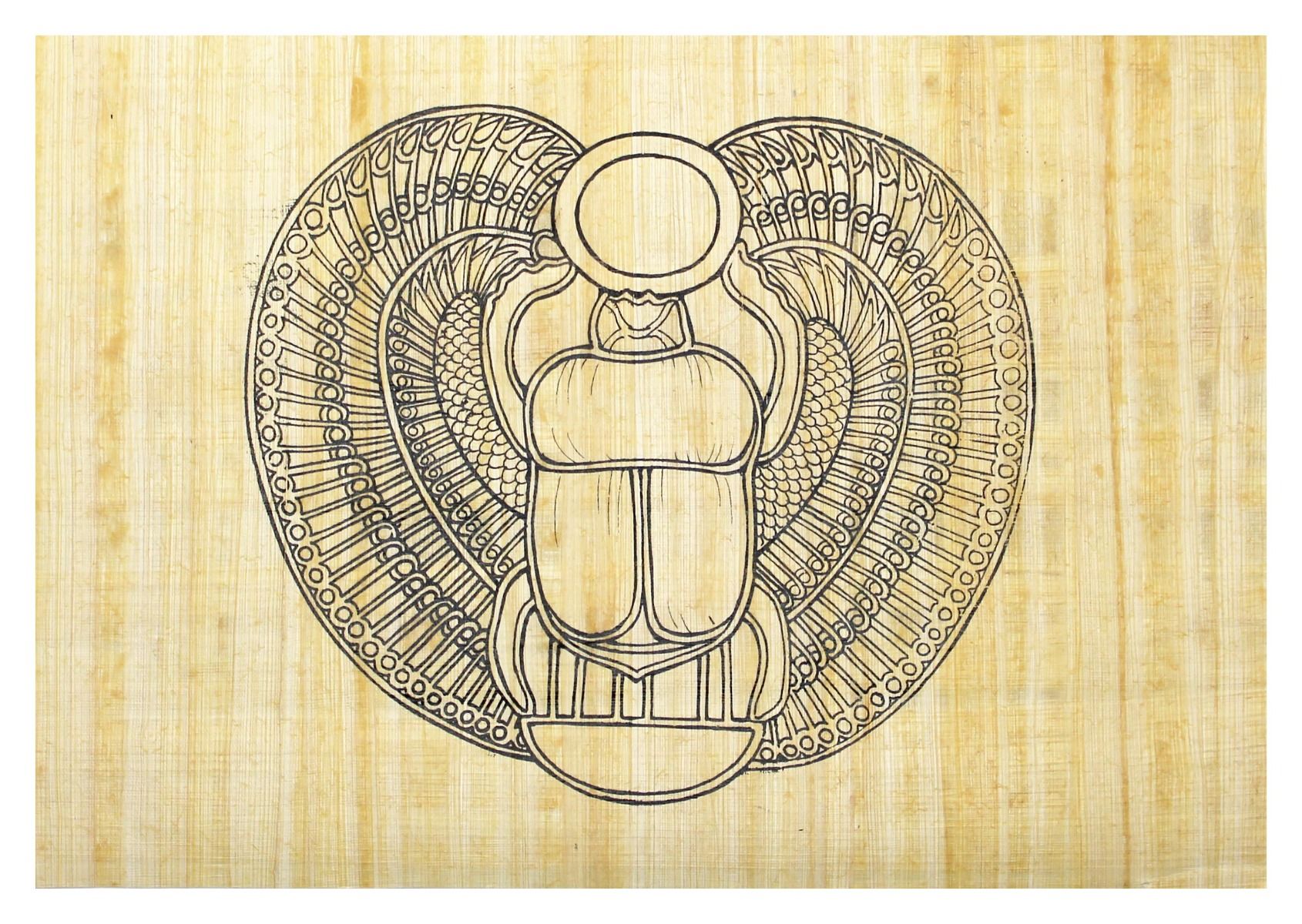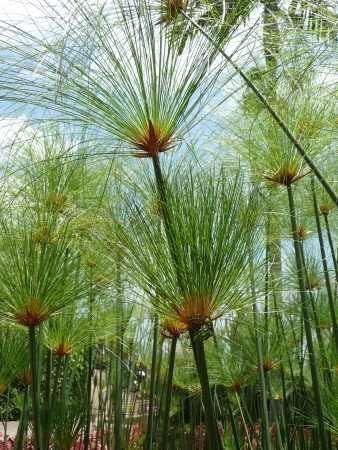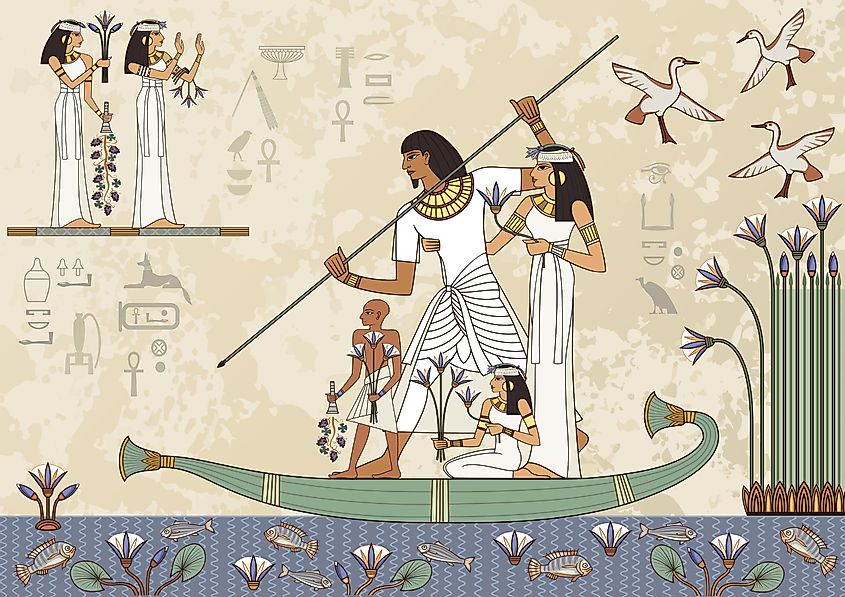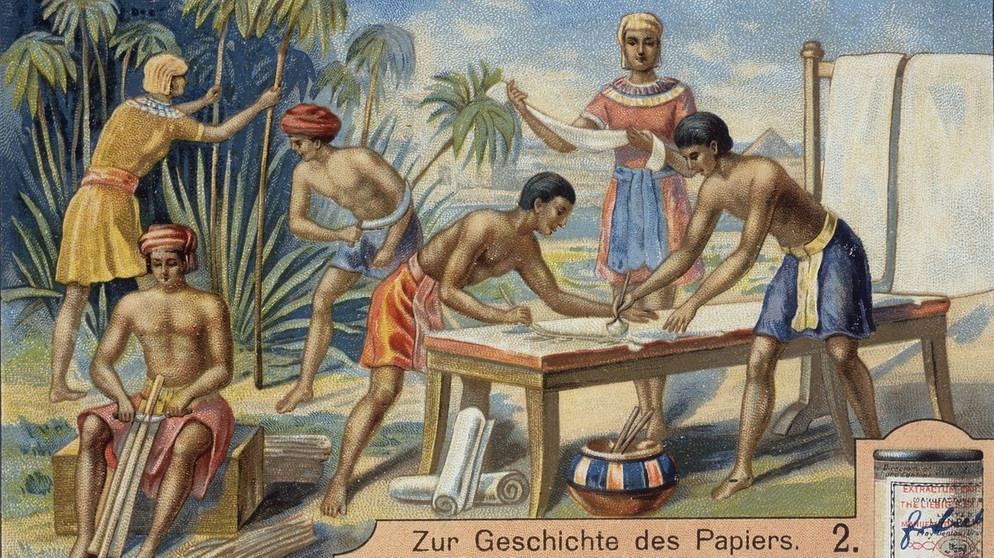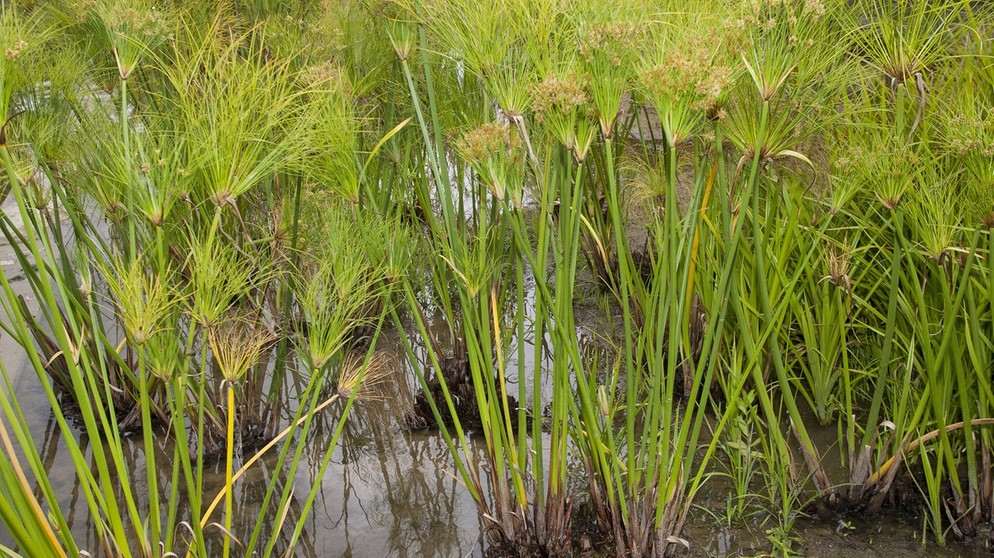Scarab
Natural papyrus with outline motif - cut - approx. A4 / 19.5 × 28 cm
This size is wonderful for teaching.
Can be glued well into a school exercise book.
Make the story tangible.
"Grasping" has to do with touching -
For painting:
12 double-fibre pencils - Article No. 2701
Extra gel pens - white, gold, silver - Article No. 2703
Set of 6 tempera colours - Article No. 2711
Tempera colours set of 14 - Article No. 2712
Brush set 6 pieces - Article No. 2713
PGI Papyrus
made of hand laid papyrus, produced in Egypt
can be painted with pens and watercolours
| Aspiration scale: | Easy |
|---|---|
| Time Line: | 45 Min |
Scarab
The ancient Egyptian name for the scarab was cheperer. This petoral made of gold and semi-precious stones depicts chepri (scarab) - the rising sun - with the sun disc.
The scarab was a symbol of the sun. Also called the pill turner, the scarab attained great importance in ancient Egypt; although only a relatively small invertebrate animal. This is due to the fact that the scarab beetle creates a ball of dung (dung ball), which it not only rolls in front of itself, but also lays its eggs in. A process that the ancient Egyptians observed early on, but obviously did not realise that the beetles hatched from larvae. For them, however, it was reason to assume that new life, as creation already says, emerges from nothing.
Jewellery, seals and amulets in the shape of scarabs were widespread in Egypt. Many seals, amulets, paintings and carvings with scarab motifs have survived. They were worn to attract light and warmth. In the form of small soapstone or clay figures or made of precious stones and often set in gold, they were also given to the dead to take with them to their gravesites as a symbol of renewed life.
